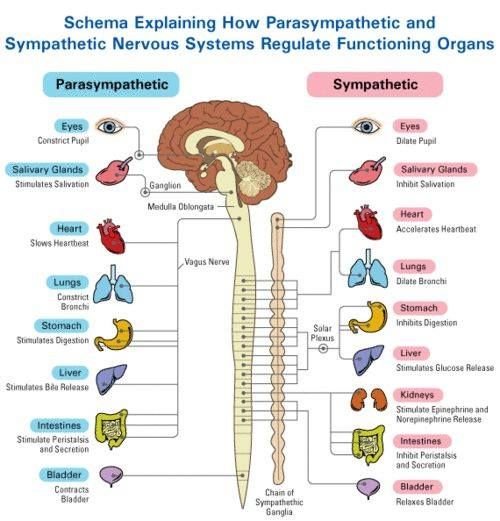
How Stress Makes Us Ill – Speeding Up Your Body’s Healing
Sympathetic vs Parasympathetic Functions of the Nervous System:
What the Parasympathetic side of the Autonomic Nervous System does:
-
Meditation; enables you to reach states of at oneness.
-
Relaxation; the ability to calm the mind.
-
Digestion; secretion of enzymes and moving of the bowel
-
Restoration; the efficiency and priorities of our body’s cellular metabolism are directly affected by whether we are at ease or anxious
-
Sleep; the ability to access the deep sleep states of youth.
-
Cell regeneration; all the metabolic chemistry that is used in healing and making new tissue.
What the Sympathetic Nervous System does:
-
Constricts blood vessels; raises blood pressure
-
Shortens breath and limits it to the chest muscles
-
Contracts pupils and produces focused “tunnel vision”
-
Reverts to reactive responses based on past experience
-
Inhibits higher brain functions (conceptual, integrative, problem solving and creativity)
-
Suppresses immune response
-
Disintegrates learned, refined movements and smooth muscle tone (colon)
-
Produces physical awkwardness resulting in loss of self esteem
-
Difficulty focusing and concentrating
-
Difficulty falling or staying asleep or waking up still tired

-
Chronic tension and pain in muscles, especially those expressive of the startle reflex
-
High levels of stress hormones and tension over time create high fluid levels in the tissue.
-
Stiff, sore muscles, poor circulation, taut, pale and thick skin
-
High fluid levels produce poor cellular nutrition, sluggish energy metabolism, poor recovery time from activity, and cell wall fragility.
We teach you how to shift your clients from the sympathetic to the parasympathetic in NeuroMuscular Reprogramming. NMR is a practical tool to include in your practice including and not limited to: physical therapists, massage therapists, physical trainers or movement educators. A new 4-part series to becoming a certified NMR therapist starts September 29th. Get 16.5% off when you sign up for all 4 classes! Sign up here.
Looking for more new NMR content? Come connect with us on Facebook or Instagram!
NeuroMuscular Reprogramming, Stress, Stress Reduction, Sympathetic Dominance, Sympathetic Hyper Arousal, Trauma

Angie Cook
Wow, that description is me all the way. Cant wait to learn this info for myself and my clients.